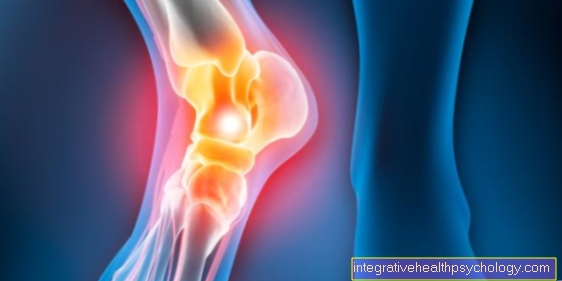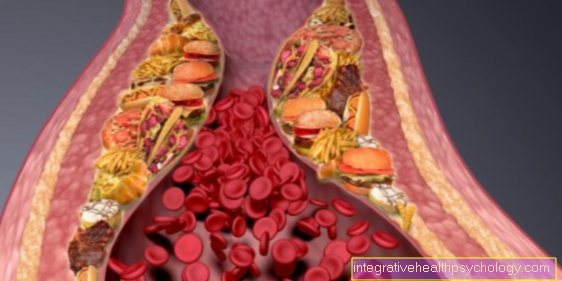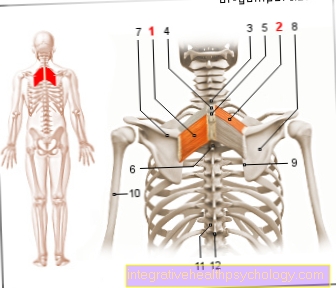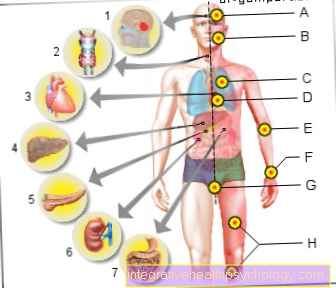Fabry disease
What is Fabry Disease?
Fabry's disease (Fabry syndrome, Fabry disease or Fabry-Anderson disease) is a rare metabolic disease in which a gene mutation leads to an enzyme defect. The result is a reduced breakdown of metabolic products and their increased storage in the cell. This damages the cell and dies. As a result, the organs are damaged and this leads to the typical symptoms of Fabry's disease.
The disease is transmitted from sick parents to their children via the X chromosome. The disease has not yet been cured and sick people often have a significantly reduced quality of life.

The reasons
The cause of Fabry's disease is a missing enzyme, α-galactosidase A. α-galactosidase A occurs within the cells in certain compartments, the lysosomes, where it is needed to break down glycosphingolipids. Glycosphingolipids are a group of sugary fats that are required for the structure of the cell. As a result of a genetic defect, those affected by Fabry disease do not have this enzyme at all or in sufficient quantities, which means that various metabolic products (especially globotraosylceramide) accumulate within the cells and damage them. As a result, the cell dies and organ damage and functional disorders occur.
This type of disease is called lysosomal storage disease, as the metabolic products in the cell accumulate within the lysosomes.
Fabry disease is inherited in an X-linked manner. The mutated gene that codes for α-galactosidase is located on the X chromosome and is passed on to the offspring. Sons of sick fathers are healthy because they only get the Y chromosome from the father, whereas the daughters always get sick because they inherit the X chromosome. Because sick men only have one X chromosome with the defective gene, the disease is much more severe in them than in women. Women also have a second X chromosome that can partially compensate for the defect.
Read more about the topic here: Storage diseases.
The accompanying symptoms
Fabry disease is a disease that affects several organ systems at the same time; this is known as a so-called multi-organ disease. The accompanying symptoms are correspondingly different. The most common are:
-
Pain in the hands and feet
-
burning pains in the tips of the body (acra): nose, chin, ears
-
Changes in the skin
-
Kidney damage
-
Heart and vascular diseases
-
Vision problems
-
Digestive tract discomfort
Symptoms around the eyes
Many patients with Fabry disease experience symptoms in the eyes. Characteristically, the cornea is cloudy due to fine deposits, which, however, do not significantly impair vision. The deposits are cream-colored and spread in a vortex over the cornea. This clinical picture is called cornea verticillata.
The lens of the eye can also be affected by the opacities; this is called Fabry cataracts. The ophthalmologist diagnoses the changes in the eyes through an examination with a slit lamp, with which the cornea and the lens can be viewed enlarged.
Read more on the subject here: Opacity of the cornea.
Symptoms on the skin
Changes to the skin are typical symptoms of Fabry's disease. Often, dark red to dark purple spots appear, which are spread over the skin like small wart-shaped bumps. These are angiokeratomas, a benign skin tumor. The points can be up to several millimeters in size and appear anywhere on the body.
The stroke
Fabry disease often causes discomfort in the blood vessels, which can lead to circulatory disorders in the brain and, in the worst case, a stroke. The risk of a stroke before the age of 50 for patients with Fabry disease is significantly increased. As a result, a stroke is one of the main causes of death in Fabry syndrome, along with kidney failure.
Find out more about the topic here: Stroke.
The muscle pain
Many patients with Fabry disease suffer from sometimes severe muscle pain.The pain mainly affects the hands, feet and face (nose, chin, ears). In many cases, the burning pain cannot be relieved by conventional painkillers, so in severe cases the doctor will prescribe opiates.
In addition, so-called paresthesias often occur, which are abnormal sensations such as numbness, tingling or pins and needles.
The diagnosis
The diagnosis of Fabry disease is not always easy and patients often have a long journey of suffering before the symptoms can be traced back to a disease with Fabry disease. It often takes several years for a doctor to make the correct diagnosis.
If Fabry's disease is suspected, the doctor makes the diagnosis using a series of laboratory diagnostic tests for which a blood sample must be taken. After confirming the diagnosis, the doctor will usually refer the patient to specific clinics that specialize in the treatment of lysosomal storage diseases.
What tests are there to confirm Fabry disease?
There are a number of molecular genetic tests that can reliably diagnose Fabry disease. First of all, a simple enzyme test can clarify whether there is a defect in the α-galactosidase. In men, a positive test result (i.e. decreased activity of α-galactosidase) is usually sufficient to determine the disease.
Sick women can still have normal activity of the α-galactosidase enzyme in the blood, so a genetic analysis is also carried out in such cases. The genetic analysis can show whether the woman has a disease-causing mutation in the α-galactosidase gene.
The treatment
An early diagnosis is very important for the treatment of Fabry disease, because the earlier the symptoms are treated, the slower the disease progresses. There are certain centers that specialize in treating the symptoms of Fabry disease and that those affected should contact. Since Fabry's disease is a multi-organ disease, the treatment is carried out by a team of cardiologists, nephrologists, neurologists and other specialists.
In addition to alleviating the symptoms, the therapeutic approach has for several years aimed primarily at replacing the missing enzyme with an artificially produced α-galactosidase. This enzyme replacement therapy causes the metabolic products to be broken down and not deposited in the organs, thereby improving the patient's symptoms. If treatment is started early, the organ systems can be prevented from being damaged and the patients can lead an almost normal life.
Also read the article: Genetic diseases.
How does Fabry disease affect life expectancy?
Fabry disease is a serious condition that causes severe damage to the kidneys, heart and brain at an early age. Due to the reduced enzyme activity, fats are deposited in the vessels and organs, as a result of which the organs are damaged more and more and finally lose their function completely. If the disease remains undetected or if no treatment is given, patients with Fabry disease often die prematurely from heart disease, chronic kidney failure or a stroke.
If left untreated, those affected have a greatly reduced life expectancy, which is only around 40 to 50 years. If the disease is recognized early and suitable treatment in the form of enzyme replacement therapy is started immediately, the patients have an almost normal life expectancy that is not far below the average age.





























